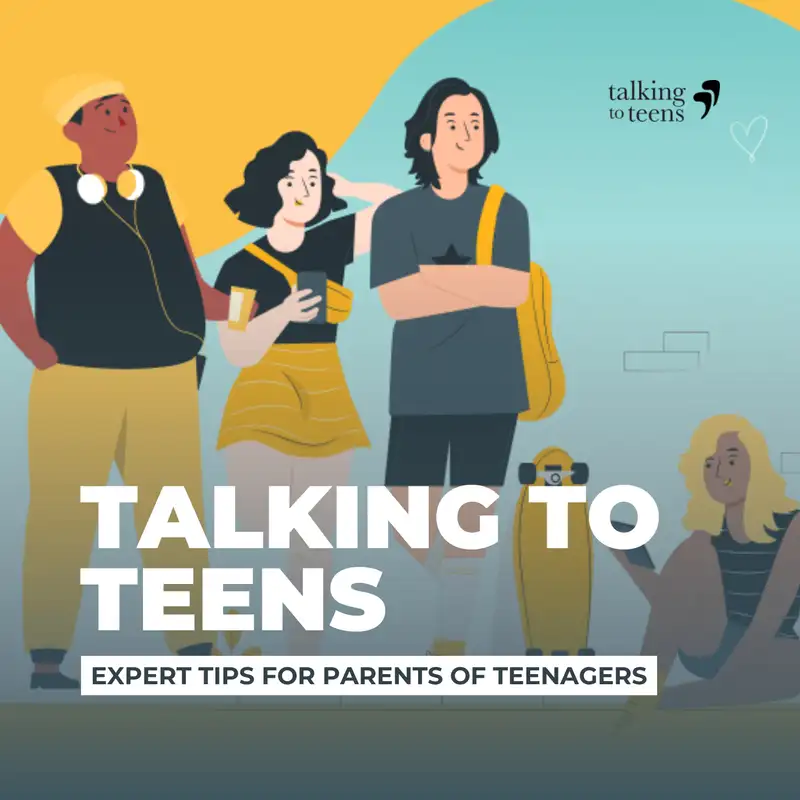Ep 39: Getting Kids to Listen to You
Chris Smith, bestselling author of The Conversion Code, reveals a step-by-step formula for how to get kids to listen to you and follow your rules. Learn how to deal with teenagers and use Pattern Interrupt statements. Getting kids to listen to you is easy when you know this.
Full show notes
Do you ever have trouble getting kids to listen to you and do what you ask? You’re not alone. Getting kids to listen is the most common problems parents have when they find this website.
The problem is that teenagers stop listening to you because they want a good reason to do something besides “I’m your parent.” According to neuroscience, they want to know how doing their chores or studying hard can benefit them. The “I’m counting to three” method of parenting becomes completely useless unless you back it up with some extremely heavy consequences. But that just backfires and creates resentment from your teen.
That’s why this week’s episode of the podcast is all about getting kids to listen to you and follow through with action. The secret to dealing with teenagers who don’t respect your authority?
Sell them on you want them to do
Full show notes
Do you ever have trouble getting kids to listen to you and do what you ask? You’re not alone. Getting kids to listen is the most common problems parents have when they find this website.
The problem is that teenagers stop listening to you because they want a good reason to do something besides “I’m your parent.” According to neuroscience, they want to know how doing their chores or studying hard can benefit them. The “I’m counting to three” method of parenting becomes completely useless unless you back it up with some extremely heavy consequences. But that just backfires and creates resentment from your teen.
That’s why this week’s episode of the podcast is all about getting kids to listen to you and follow through with action. The secret to dealing with teenagers who don’t respect your authority?
Sell them on you want them to do
To discover the secret to getting kids to listen, I spoke with Chris Smith and worked through a step-by-step plan that will teach you all about getting kids to listen. Chris is the bestselling author of The Conversion Code, and the Co-Founder of Curaytor, which is one of the fastest-growing companies in America. He’s an expert at selling products over the phone and he’s trained thousands of salespeople around the world how to adopt his pitch.
In this episode, we go through an in-depth, step-by-step example of how to deal with teenagers who don’t want to clean their room. After tuning in, you’ll be able to use some of Chris’ actual word-for-word dialogue he’s used with his own daughter to taker her responsibilities seriously. But to use his method correctly, you’ll need to know how it works. According to Chris, getting kids to listen breaks down into a four-step strategy:
- Starting with a “Pattern Interrupt” Statement
- Finding Something Your Child Wants
- Using the “Five Yes” Technique
- Following up with a “Feature-Benefit Tie-Down”
You can apply these principles of getting kids to listen to any behavior you want your teen to start doing. According to Chris, the idea isn’t so much a script as it is a framework for productive conversations. You don’t want to command your teen, but rather get them to understand and eventually act from your perspective. While you’ll have to tune in to the whole podcast to hear the extent of Chris’ strategy, here’s just a peek into how it works:
Establishing Authority
The first step of getting kids to listen is a bit sneaky. It’s a sales technique that Chris calls the Pattern Interrupt statement, which involves establishing authority early on in the conversation through small, innocuous commands. For example, you can start a conversation by saying, “I want to talk to you about something. Bring your phone with you to take some notes.” The small command of “bring your phone” puts your child’s mind on track to be more receptive to directives.
The key to getting kids to listen by using Pattern Interruption is subtlety. You want to give your teen a small order to follow so it doesn’t seem burdensome, but you’re still opening your teen up to be more agreeable. Given a minor objective, like “Turn off the lights in your room before coming downstairs” or “Can you pull up your calendar,” your teen is prepped to collaborate without even knowing it.
Chris also recommends starting with a Pattern Interrupt statement because it demonstrates that you are the authority in the conversation. You want to be able to set the tone of the conversation early on, and giving your teenager something to do is an innocuous way of getting kids to listen and letting them know that there’s more to come.
Digging Deep to Find Incentives
Getting kids to listen is important if you want them to adopt your goals while also pursuing their own accomplishments. To do this, parents need to use a technique called Digging Deep. Digging deep means investigating the details of what your teen wants to do and using their reasoning to support your own goals. The idea is that if you’re going to help someone get what they want, you have to know what it is. To do this, Chris says you need to identify what your child cares most about so you can leverage their desire to meet your goals as a parent.
Aside from getting kids to listen to you, your goal is to turn your kids into responsible adults who want their own rooms to be clean instead of reminding them to do their chores all the time. So, if you can dig deep and find reasons to take out the trash that benefit your teen, you can sell them on this idea of personal responsibility.
Let’s say your teen wants to go to the movies but you want them to clean their room. How do you align the two goals? First, you need information about the event that you can use to build a link. Chris says that most parents stop investigating after asking their kids, “What are you going to do this weekend?” But when you stop asking questions, you’re losing out on valuable information that can help you better understand what your teen wants.
Are they going out with friends? Why does your teenager want to hang out with this group? When you dig deep and ask questions like “when, where, why, and who,” you might find that your child wants to fit in more at school and have something to talk about with their friends next week. They want the social experience of feeling accepted.
Once you have a better understanding of the situation, you can tell your child that after the movies, their friends won’t want to come over if their room is dirty and gross. Now they see that having a clean room benefits them in the long run. By digging deep and pairing your child’s desires with responsible practices, you’re preparing your child for adulthood. Because without realizing it, they’re building in good habits that they might thank you for later on down the road.
The Five Yesses
Once you’ve listened to your teen and dug deep to figure out your child’s incentives, it’s time to use the Five Yesses Strategy. This works by putting the information you’ve gathered into a list along with some of your own objectives, like taking out the trash or washing the car. Then, you repeat the list of your shared goals back to your teen with affirmative statements. Here’s what that exchange might look like:
Parent: You want to go to the movies, right?
Teen: Yes.
Parent: And it’s for this PG-13 movie?
Teen: Yeah.
Parent: Got it. And you want your three friends to go with you?
Teen: Yup!
Parent: And you want to go this weekend, right?
Teen: Yes.
Parent: So, you know that means you have to vacuum the living room before Friday in order to go, right?
Teen: YES!
Parent: Okay, that sounds like a plan.
The genius behind the Five Yesses technique is that you’re building a compromise into the conversation without it feeling like a back-and-forth debate. In the sales cycle, this tactic is used all the time. You sell the customer on a lot of small details that prime them to say YES to what you want them to do. The same thing can be applied to getting kids to listen when it comes to cores or doing homework. It also has the added benefit of letting your teen know you’re listening to them. When they feel heard, it makes them more agreeable to follow directions because their needs are being taken seriously.
Feature-Benefit Tie-Down
The final stage of getting kids to listen is telling them all the great things they’re going to accomplish contingent on what you want them to accomplish. Chris’ simple strategy for getting the most out of what your teen wants to do is called “Feature-Benefit Tie-Down.” It works by giving context to all of your teen’s desires that ally their goals with things that are important to you, like preparedness and responsibility.
Chris compares this step to selling a car. When people go to buy a car, they have a list of all the features they’re interested in. Nice seats, good mileage, and a cool paint color. It is the salesperson’s job to go over why each of these attributes are important in the long run to make sure that the buyer’s choice is correct. This allows the seller to bargain for a good price because they’re able to highlight the true value of the agreement.
When you adapt this process to talking with your teen about your shared goals, getting kids to listen and internalize your values as well will be a lot simpler. For example, when you encourage your teen to prioritize their studies, you can sell them on the fact that they’ll have more time to spend with friends if they finish their work in a timely manner. You can then highlight the importance of friendship as well maintaining good grades so they’ll invest in your pitch.
There’s more than just this technique!
There are so many more techniques that Chris shares with me about getting kids to listen! Including…
- One + One = Trust
- Gaining control of a negotiation when things start to spiral
- Collaborating on the compromise
- Using the A.R.C. “Acknowledge. Respond. Close Again” method
I’m thankful that Chris shared his wisdom with me this week about getting kids to listen by using sales techniques. He has so much experience for parents to learn from, and easy-to-use tactics to help parents compromise with their teens. I found Chris’ advice to be thought-provoking and engaging, and I know you will, too!
Creators and Guests


